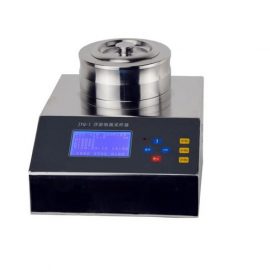Microbial Air Sampler: A Comprehensive Review of Applications and Advancements

# Microbial Air Sampler: A Comprehensive Review of Applications and Advancements
## Introduction
Microbial air samplers have become indispensable tools in various fields, from healthcare to environmental monitoring. These devices play a crucial role in detecting and quantifying airborne microorganisms, providing valuable insights into air quality and potential health risks. This article delves into the applications and advancements of microbial air samplers, highlighting their significance in modern science and industry.
## Understanding Microbial Air Samplers
Microbial air samplers are specialized instruments designed to collect and analyze airborne microorganisms, including bacteria, fungi, and viruses. They operate by drawing in air and capturing microorganisms onto a collection medium, such as agar plates or filters. The collected samples are then incubated and analyzed to identify and quantify the microbial content.
### Types of Microbial Air Samplers
There are several types of microbial air samplers, each with its unique mechanism and application:
– **Impaction Samplers**: These samplers use a high-velocity air stream to impact microorganisms onto a solid surface, such as an agar plate.
– **Filtration Samplers**: Air is passed through a filter, trapping microorganisms which can then be cultured or analyzed.
– **Liquid Impingement Samplers**: Air is bubbled through a liquid medium, capturing microorganisms in the liquid for subsequent analysis.
– **Electrostatic Precipitators**: These use an electric charge to attract and collect airborne particles, including microorganisms.
## Applications of Microbial Air Samplers
Microbial air samplers are utilized in a wide range of applications, each requiring specific sampling techniques and analysis methods.
### Healthcare Settings
In hospitals and clinics, microbial air samplers are essential for monitoring air quality to prevent healthcare-associated infections (HAIs). They help identify potential sources of contamination and ensure compliance with hygiene standards.
### Pharmaceutical Industry
The pharmaceutical industry relies on microbial air samplers to maintain sterile environments during the production of drugs and medical devices. Regular air sampling ensures that manufacturing areas are free from microbial contamination.
### Environmental Monitoring
Environmental scientists use microbial air samplers to study the distribution and concentration of airborne microorganisms in various ecosystems. This data is crucial for understanding the impact of environmental changes on microbial communities.
### Food Industry
In the food industry, microbial air samplers are used to monitor air quality in processing and packaging areas. This helps prevent contamination and ensures the safety and quality of food products.
## Advancements in Microbial Air Sampling Technology
Recent advancements in microbial air sampling technology have significantly improved the efficiency and accuracy of these devices.
### Automation and Real-Time Monitoring
Modern microbial air samplers are increasingly automated, allowing for continuous monitoring and real-time data collection. This reduces the need for manual intervention and provides immediate feedback on air quality.
### Enhanced Sensitivity and Specificity
Advancements in detection methods, such as PCR (Polymerase Chain Reaction) and next-generation sequencing, have enhanced the sensitivity and specificity of microbial air samplers. These technologies enable the detection of low concentrations of microorganisms and the identification of specific strains.
### Portable and Compact Designs
The development of portable and compact microbial air samplers has expanded their use in field studies and remote locations. These devices are lightweight, easy to transport, and capable of operating in diverse environmental conditions.
## Conclusion
Microbial air samplers are vital tools in the detection and analysis of airborne microorganisms. Their applications span across healthcare, pharmaceuticals, environmental monitoring, and the food industry. With ongoing advancements in technology, these devices are becoming more efficient, accurate, and versatile, paving the way for improved air quality management and public health protection.
Keyword: Microbial Air Sampler
